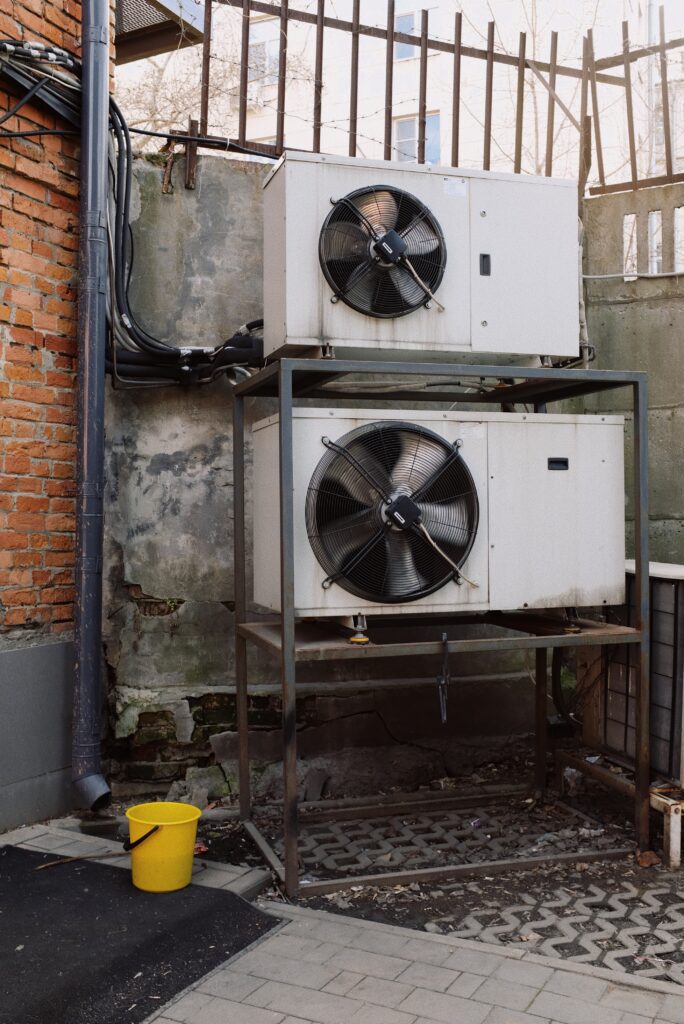Mould has been around since the dawn of time, but in recent years it has become a much bigger problem. The ‘age of mould’ is upon us. Experts predict that social and environmental factors are increasingly creating the ideal growing conditions for this fungus to invade our lives. If left unchecked, it can quickly spread through your home and cause damage to your property. Not to mention becoming a health risk if you or anyone else in the household is vulnerable to its effects. Understanding more about why mould is such an issue now is the first step towards actively managing it and limiting its harmful potential.

There has been a recent surge in mould growth due to a combination of environmental and social conditions. Several factors contribute to the growth and spread of the virus. It is not just one thing. When you put all of these things together, it increases the risk.
Temperature levels, humidity, air exchange rates and water leakage may each have an impact on this issue on their own. However, when these things come together the effect is so much more powerful. An example includes the following: mould spores hanging around naturally in the air, then landing on damp surfaces. On the surfaces there is dust or food which creates a combined highly favourable growth conditions. This can then result in an accelerated problem with rapid spread across the surface and into other rooms.
Scientists use tools such as predictive modelling and data modelling to figure out how different things affect each other. This allows them to understand the issue better and manage it more effectively in the future.
Climate Change makes mould more on issue today
Warmer temperatures and increased humidity have created a more inviting environment for mould to grow across the world.
Climate change has manifested in many different ways, one of which is an increased frequency of severe flooding globally. This is worthy of serious consideration as floods significantly increase the risk of mould growth. This occurs in both homes and businesses due to improper cleanup or inadequate building practices afterwards.
Increased Use of Air Conditioners, Humidifiers & Dehumidifiers
As temperatures rise due to global warming, air conditioners are increasingly in demand. The use of air conditioners,while cooling can increase indoor moisture levels, which can promote mould growth. Few people are aware that without good maitainance that air conditioning use can lead to a greater risk of mould in the room and the equipment itself! Similarly, humidifiers and dehumidifying equipment can easily become breeding grounds for these fungi.

Mould spores thrive in places with high humidity and inadequate ventilation And thes are precisely the conditions created by these machines. Without proper maintenance, these devices can increase the risk of mould growth within a space. As with your perpective on fungi , a balance is to be struck between enjoying the benefits and stopping it from being harmful to you.
Poor Building Practices creates conditons that favour mould growth
Today’s buildings often lack optimal insulation and ventilation, leading to a higher risk of mould growth indoors. Poorly sealed structures are susceptible to external moisture seeping in. Unvented attics easily provide moist and dark environments for fungi proliferation if not monitored carefully. Basements re ofetn overlooked and inadequately damp-proofed, if at all. These then present the danger of harbouring dangerous mildew due to inadequate airflow and the risk of dampness caused by high water tables beneath them.
Dark,damp areas such as attics and basements rarely receive enough sunlight to dry up any excess moisture. So they maintain ideal conditions for mould growth even in moderate climates. Similarly, rooms without windows are more vulnerable e.g. centrally situated bathrooms or pantries.
Reduced Thorough Cleaning Habits can support mould becoming established
Mould needs dampness to survive. Everyday habits like leaving wet towels on the floor or not adequately ventilating bathrooms after baths/showers can create ideal conditions for it to thrive in.
Surfaces such as carpets, furniture, curtains and other household fabrics are all potential seed beds for mould development. They retain moisture over long periods as well as being a source of food for the fungi. A powerful combination!
Spilt pet food or droppings, crumbs, food smears and droplets left unattended attract fungal spores, as well as insect. They also provide them with ideal conditions for survival which then leads to further development and spread.
Lack of Regular Property Maintainance lets mould sneak in
Any water leak e.g. from plumbing, roofing, can create a damp environment for mould to grow and spread in. Old or worn-out pipes can easily leak and create areas of excess moisture. This makes them prime targets for mould growth if ignored. Leaks like these are one of the most common and powerful triggers encouraging mould accumulation.
Similarly, areas with poor drainage systems can lead to extended periods of water-loggedg round. This is an increased risk of mould growth in buildings above them (with or without basements). The outside areas like gardens and lawns will also be affected.
Clogged gutters can cause water to back up and flow onto siding, foundations or other areas of a house. This will provide that basic mould spore attracting dampness.
Modern Ways of Living are pro-mould
Maintaining adequate indoor temperatures is essential to guard against mould growth in the home. Extreme temperatures, either too high or too low, can cause significant damage to your living environment. Indoor humidity levels should also be monitored. If insufficient attention is devoted to managing temperature and humidity levels, the consequences can be severe – everything from your home falling apart to breathing in harmful mould spores could be a problem.
For optimal indoor climate control, it’s important to regularly inspect air flow pathways. Also check for any water seepage that could lead to mould outbreaks. Taking these preventative measures will help you tackle the issue of mould before it requires damaging and costly repairs.

Window condensation, or the build-up of moisture around or on windows, is a common occurrence during cold weather. This occurs when warm indoor air meets with a cold windowpane. The temperature alongside poor window seals can become particularly problematic when not taken care of. This can significantly increase the risk of mildew and mould growth.
Stagnant air due to poor ventilation within a space increases the risk of mould growth. There is no fresh air circulation to replace dampened air with drier, fresher air from outside. If mould is already present, the lack of ventilation also increases the concentration of mould spores (and other air-borne problems like viruses, bacteria, and toxic chemicals). These can more easily be inhaled by anyone on the property raising the risk of potential harm.
Home equipment such as gas stoves and non-vented tumble-dryers, steam cleaners and cooking processes produce moisture-filled air. This can linger in the home and create prime conditions for mould growth if not properly vented. When lint and moisture accumulate in the tumble-dryer vent it can create perfect conditions for fungal growth if not cleaned regularly.
Rising indoor pollution levels such as that caused by smoking, dust mites, pet fur/dander and chemical fumes from cleaning products or fireplaces can all promote the growth of mould spores indoors. It also makes people more vulnerable to the effects of mould and other potential health challenges.
While indoor plants go some way towards filtering some of these pollutants, their potential contribution to mould risk must also be monitored. Too much water in plants’ soil can create a moist environment. This can add to the overall humidity of the property and encourage mould spores to develop in and on the soil, where they can then spread from.
AS the trend to bring stylish and modern luxury into our homes continues to grow, so too do the risks associated with indoor pools, hot tubs, steam rooms, and saunas. Without careful planning during construction, with regular maintenance and monitoring, these damp spaces create an ideal climate for fungal growth. It provides that potent combination of warm temperatures and high humidity levels that fungi love.
Lack of Accessible Information and Advice
This fuels a lack of awareness and motivation to take reasonable steps until faced with the disaster of your iving or work space becoming overrun by mould. Especially when this scarily worsens or precipitates the onset of ill-health.
The above includes some of the factors that either on their own, but more often in combination greatly encourage the spread and growth of mould, and offer some understanding about why it is more of an issue for us all now.
Thus, by starting to know more about the source and causes of mould growth, you can be proactive in preventing it from taking hold in your living and working and playing spaces. Regular inspection of vulnerable areas, using dehumidifiers(which you maintain!) when necessary, frequently airing out the property and especially wet spots, and being mindful of proper insulation are all effective ways to ensure a safe space free from mould contamination. Taking these precautionary steps can help maintain air quality within the home and reduce the risk of more serious health-related issues caused by prolonged mould exposure.
In addition to taking preventative measures, it is important to have a plan in place for quickly identifying and removing any existing mould growth in your home. Professional help may be necessary if the issue persists or has spread too far, but knowing something about the behaviour of mould can help you stay one step ahead and make sure that it does not continue to threaten the safety of your living space.

It is also vital to stay vigilant against its potential growth and spread even when you have taken care of obvious weak areas. Knowing how to recognise potential sources of moisture, and regularly inspecting and maintaining your living space is a way to manage and live alongside this fungus without becoming overwhelmed.
With awareness and proper planning, you can create a safe and healthy environment in your home that will protect both you and your family for years to come.